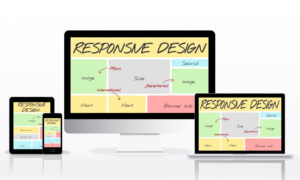In the fast-paced digital world, user experiences have become paramount to the success of any online venture. To gain a competitive edge and foster user loyalty, businesses must invest in Interaction Design, a field that focuses on creating intuitive and user-friendly interfaces. In this comprehensive article, we delve into the significance of Interaction Design in enhancing user experiences and its potential to outrank competing websites on Google.
Table of Contents
Understanding Interaction Design
Interaction Design is a multidisciplinary approach that amalgamates user psychology, technology, and creativity to shape digital experiences. Its primary aim is to design interfaces that facilitate seamless interactions between users and digital products or services. By employing a user-centric approach, Interaction Designers gain deep insights into user behavior, preferences, and pain points, enabling them to craft innovative solutions that cater to the specific needs of the target audience.
The Principles of Interaction Design
A successful Interaction Design is built on a solid foundation of principles that guarantee an exceptional user experience. These principles include:
Consistent design Elements
Consistency is key to providing users with a familiar and predictable experience throughout their journey on a website or application. By maintaining consistent design elements, such as color schemes, buttons, and navigation, users can navigate with ease and confidence, leading to increased engagement and satisfaction.
Feedback
Feedback is the bridge between user actions and system responses. Offering clear and timely visual feedback informs users that their interactions are acknowledged, reducing uncertainty and enhancing user confidence. Whether it’s a hover effect, loading animation, or confirmation message, feedback assures users that their actions are leading towards their desired outcomes.
Efficiency
In today’s fast-paced world, users demand efficiency in their online interactions. Interaction Designers aim to minimize the steps required to accomplish tasks, making it effortless for users to achieve their goals. By streamlining processes, businesses can reduce bounce rates, increase conversion rates, and boost overall user satisfaction.
Minimalist Interface
Simplicity is the epitome of elegance in Interaction Design. By removing unnecessary clutter and distractions, designers enable users to focus on the core functionalities. A clean and minimalist interface reduces cognitive load, ensuring a smooth and enjoyable user experience.
Importance of User Research
Comprehensive user research serves as the bedrock of effective Interaction Design. Through surveys, interviews, and usability testing, Interaction Designers gain invaluable insights into user motivations, expectations, and pain points. This data-driven approach empowers designers to make informed decisions and align their design choices with the real needs of the target audience.
Creating Intuitive Interfaces
An intuitive interface is like a well-crafted map that guides users effortlessly through a website or application. By leveraging familiar design patterns and logical layouts, Interaction Designers ensure that users can navigate without encountering confusion or frustration. Intuitive interfaces reduce the learning curve, making it easy for both new and returning users to interact with a digital product seamlessly.
The Role of Visual Feedback
Visual feedback is an integral part of Interaction Design, as it bridges the communication gap between users and technology. By incorporating interactive visual cues, such as button animations, hover effects, and progress indicators, designers can provide immediate responses to user actions. This real-time feedback reassures users that their interactions are registered, leading to enhanced engagement and satisfaction.
Navigating User-Centric Design
User-centric design puts the needs, preferences, and pain points of users at the heart of the design process. It involves continuous feedback and iteration, with the objective of creating solutions that cater to real user problems. By empathizing with users and involving them throughout the design cycle, Interaction Designers can create experiences that resonate with their audience, fostering long-term customer loyalty.
Accessibility in Interaction Design
Ensuring accessibility in Interaction Design is not just about compliance; it’s about inclusivity. Designers must consider users with disabilities and impairments, ensuring that their designs are usable by all. Implementing accessible design practices enhances the user experience for everyone, regardless of their abilities, and broadens the reach of a website or application.
Balancing Aesthetics and Functionality
A delicate balance between aesthetics and functionality is crucial in Interaction Design. While a visually appealing design can draw users in, it should never compromise the usability and efficiency of the interface. Interaction Designers must harmonize form and function to create experiences that captivate users while effortlessly guiding them toward their goals.
Measuring UX Success
In the world of Interaction Design, measuring user experience (UX) success is paramount. By analyzing metrics such as click-through rates, bounce rates, conversion rates, and user feedback, designers can identify areas for improvement and optimize their designs. Consistent measurement and analysis enable iterative improvements, enhancing the overall user experience and ultimately outranking competing websites on Google.
The Future of Interaction Design
As technology continues to evolve at a rapid pace, Interaction Design will embark on a thrilling journey into the future. The integration of artificial intelligence, augmented reality, virtual reality, and voice interfaces will revolutionize user interactions. Interaction Designers will embrace these emerging technologies to create experiences that captivate, delight, and anticipate user needs, thereby setting new standards for digital experiences.
In conclusion, Interaction Design plays a pivotal role in enhancing user experiences and influencing a website’s search rankings on Google. By adhering to the principles of consistency, feedback, efficiency, and simplicity, designers can craft intuitive interfaces that resonate with users. Involving users through user research and embracing accessibility principles ensures inclusivity and broadens the audience reach. As Interaction Design evolves, it will continue to shape the digital landscape and drive user engagement to new heights.
FAQs:
Q1: What is Interaction Design?
Interaction Design involves creating interfaces and interactions that are intuitive, user-friendly, and visually appealing, aiming to enhance user experiences.
Q2: Why is User Research essential in Interaction Design?
User research provides valuable insights into user behavior and preferences, helping designers make informed decisions and create solutions aligned with user needs.
Q3: What makes an interface intuitive?
An intuitive interface leverages familiar design patterns and logical layouts, enabling users to interact with a product naturally, without the need for extensive instructions.
Q4: How does visual feedback impact user experiences?
Visual feedback reassures users about the outcome of their interactions, reducing frustration and enhancing the overall experience.
Q5: Why is accessibility important in Interaction Design?
Accessibility ensures that designs are usable by all, including users with disabilities, making technology more inclusive and empowering a broader audience.
Q6: How can Interaction Designers measure the success of their designs?
Interaction Designers use metrics like bounce rates, conversion rates, and user feedback to assess the effectiveness of their designs and identify areas of improvement.
Q7: What challenges do Interaction Designers face?
Interaction Designers must strike a balance between aesthetics and functionality, ensuring visually appealing designs without compromising usability.
Q8: How will Interaction Design evolve in the future?
The future of Interaction Design will likely involve the integration of AI, augmented reality, and voice interfaces, requiring designers to adapt and innovate.




